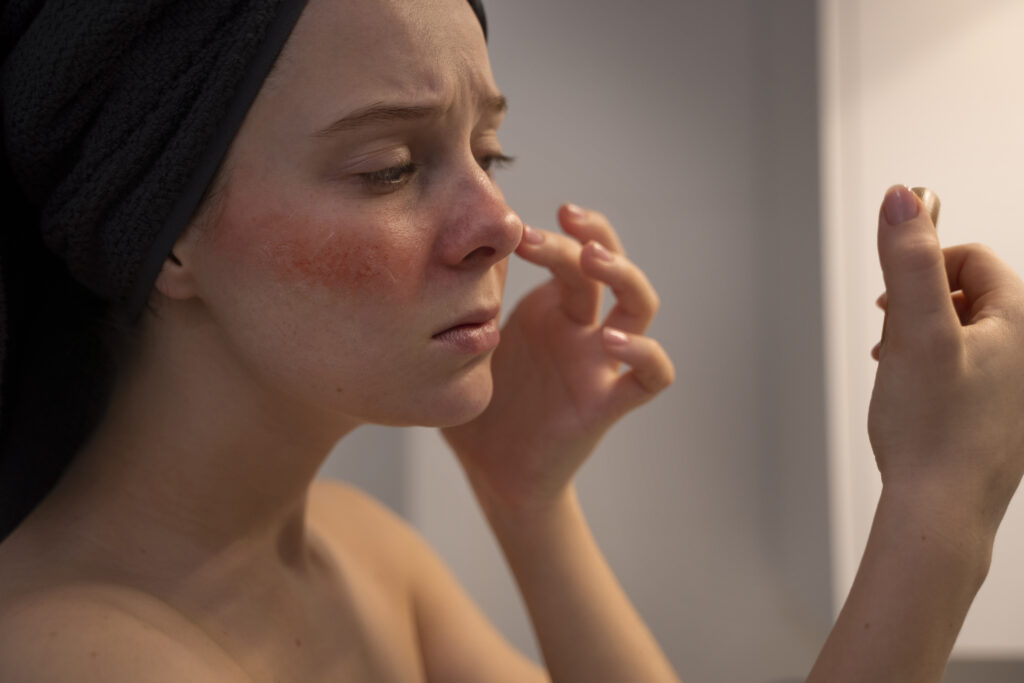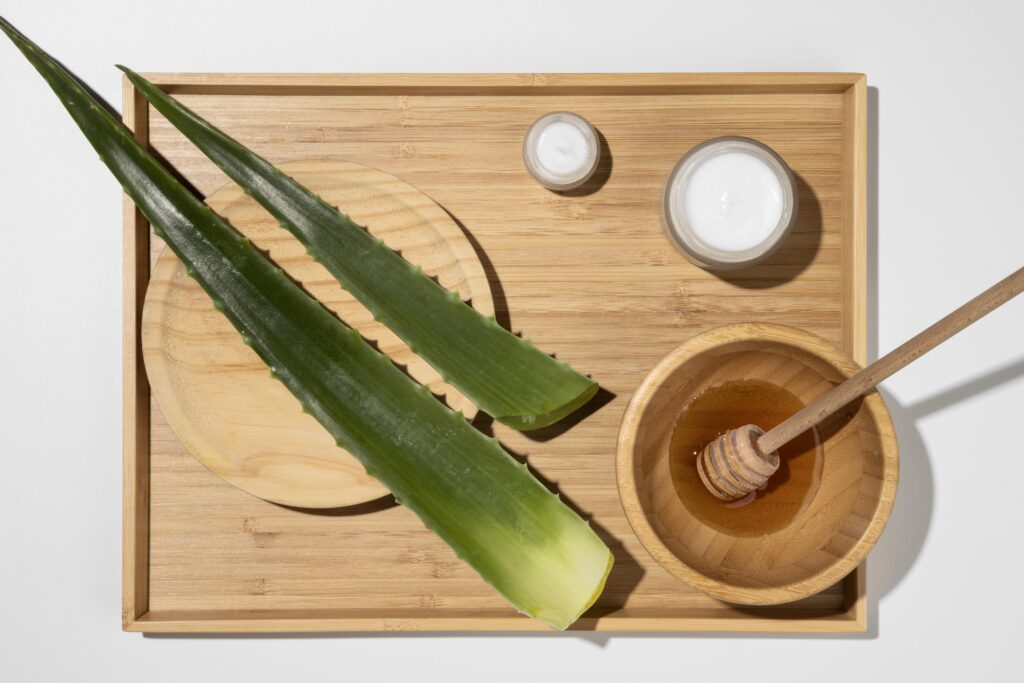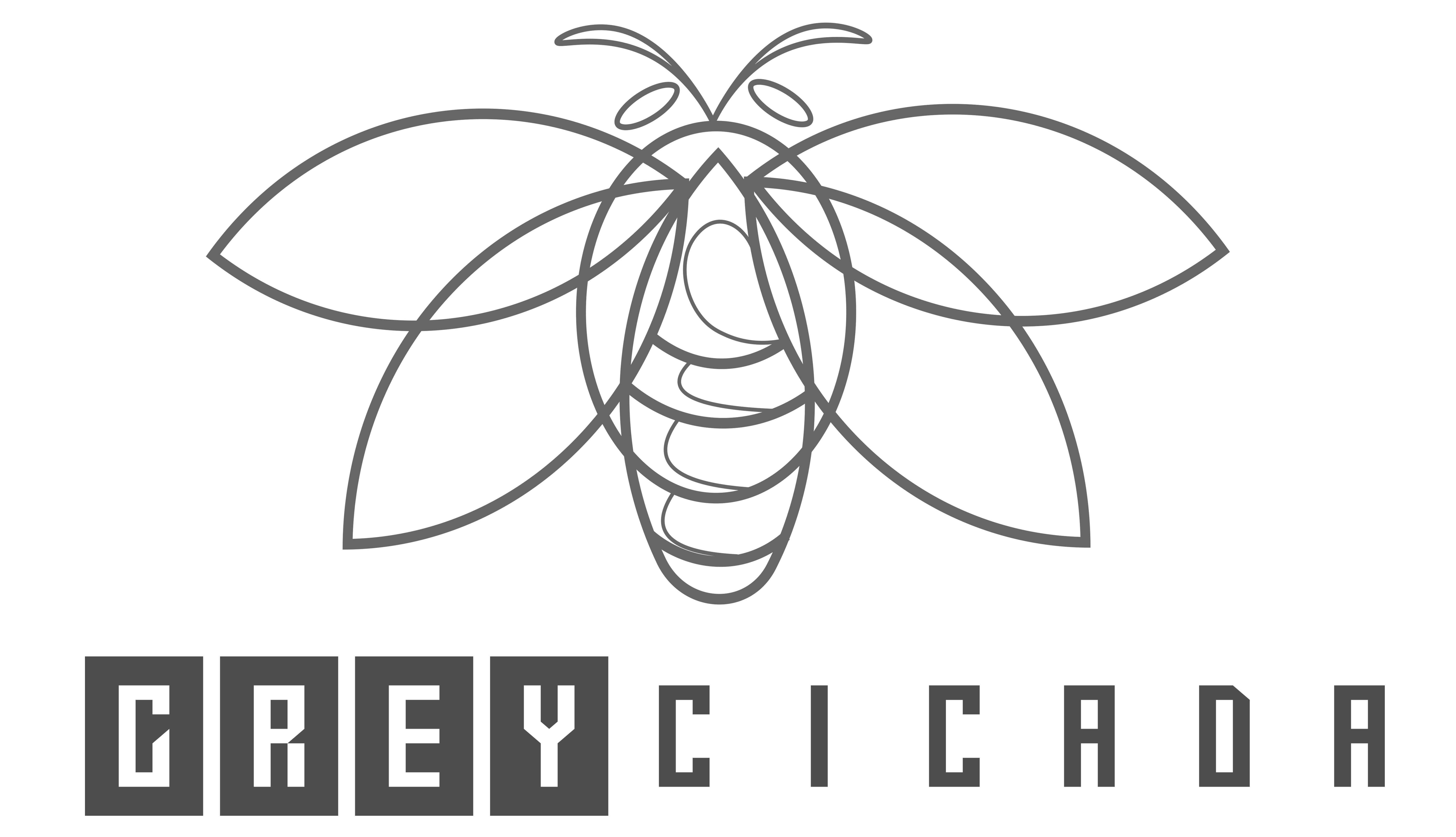FREE SHIPPING OVER $50
Managing Seborrheic Dermatitis Symptoms: Home Remedies for Relief
Seborrheic dermatitis is a common skin condition characterized by redness, itching, and flaking of the skin. It can affect various areas of the body, including the scalp, face, and ears. If you’re experiencing seborrheic dermatitis symptoms such as dandruff, hair loss, or irritation on your face and ears, you’re not alone. Although it doesn’t have a cure, we will explore effective home remedies to manage seborrheic dermatitis symptoms and provide you with the relief you seek.
Understanding Seborrheic Dermatitis

What is Seborrheic Dermatitis?
Seborrheic dermatitis is a common skin condition characterized by red, inflamed skin covered with flaky scales. It typically occurs in areas of the body where there are more oil glands, such as the scalp, face, and ears. The exact cause of seborrheic dermatitis is not fully understood, but it is believed to involve a combination of genetic, environmental, and hormonal factors.
The symptoms of seborrheic dermatitis can vary from person to person but often include redness, itching, and flaking of the skin. In some cases, the affected areas may become greasy or oily. Seborrheic dermatitis can be a chronic condition, with symptoms that come and go over time. It is not contagious and does not pose any serious health risks, but it can be bothersome and affect a person’s quality of life.
Seborrheic Dermatitis Symptoms
Seborrheic dermatitis can manifest in various ways, and recognizing the symptoms is crucial for early detection and proper management. They generally include:
- Redness and inflammation of the skin
- Itching and irritation
- Flaky or scaly skin
- Greasy or oily patches
- Hair loss (in severe cases)
- Dandruff or flaky scalp
In some cases, seborrheic dermatitis can extend beyond the typical areas and affect the chest, back, and other parts of the body. It may also cause hair loss as stated above, particularly when the scalp is involved. By familiarizing yourself with these symptoms, you can seek appropriate treatment and make lifestyle adjustments to manage seborrheic dermatitis effectively.
Home Remedies for Seborrheic Dermatitis Relief

Natural Treatments for Seborrheic Dermatitis
When it comes to managing seborrheic dermatitis, natural treatments can provide relief and support overall skin health. Here are some effective natural remedies to consider:
- Apple Cider Vinegar: Its antibacterial and antifungal properties can help combat the underlying causes of seborrheic dermatitis. Dilute apple cider vinegar with water and apply it to the affected areas using a cotton ball. Leave it on for a few minutes before rinsing it off.
- Tea Tree Oil: With its powerful antifungal and anti-inflammatory properties, tea tree oil is a popular natural remedy for seborrheic dermatitis. Mix a few drops of tea tree oil with a carrier oil, such as coconut oil, and apply it to the affected areas. Leave it on for a few hours or overnight before washing it off.
- Aloe Vera: Known for its soothing and moisturizing properties, aloe vera can help alleviate itchiness and inflammation associated with seborrheic dermatitis. Apply fresh aloe vera gel directly to the affected areas and leave it on for 20-30 minutes before rinsing it off.
- Coconut Oil: Its antimicrobial and moisturizing properties make coconut oil a valuable remedy for seborrheic dermatitis. Gently massage a small amount of organic coconut oil onto the affected areas to moisturize and soothe the skin.
Remember, while natural treatments can provide relief, it’s essential to consult with a dermatologist to ensure an accurate diagnosis and determine the best treatment plan for your specific condition.
Seborrheic Dermatitis Shampoos
Using the right shampoo can be an effective way to manage seborrheic dermatitis on the scalp. Look for shampoos containing the following ingredients:
- Ketoconazole: An antifungal compound renowned for its ability to combat yeast overgrowth on the scalp, aiding in the reduction of seborrheic dermatitis symptoms.
- Zinc Pyrithione: This potent ingredient tackles dandruff and helps soothe inflammation, providing relief for those affected by seborrheic dermatitis.
- Selenium Sulfide: A valuable addition to your shampoo selection, selenium sulfide targets the underlying causes of seborrheic dermatitis by effectively reducing flaking, scaling, and addressing scalp irritation.
- Coal Tar: Harness the benefits of coal tar, which effectively slows down the rapid growth of skin cells, diminishing flaking and scaling associated with seborrheic dermatitis.
It is also important to look for shampoos that specifically target the condition and offer the following benefits:
- Antifungal Properties: Choose shampoos that contain antifungal ingredients like ketoconazole, selenium sulfide, or zinc pyrithione. These ingredients can help combat the underlying fungal overgrowth that contributes to seborrheic dermatitis.
- Gentle and Moisturizing Formulas: Opt for shampoos that are gentle on the scalp and help moisturize the skin. Look for ingredients like aloe vera, tea tree oil, or coconut oil, which can provide soothing and moisturizing effects.
- Scalp Cleansing: Effective seborrheic dermatitis shampoos should help remove excess oil, flakes, and build-up from the scalp. Look for shampoos with ingredients like salicylic acid or coal tar, which can aid in gently exfoliating the scalp and reducing flakes.
- Frequency of Use: Consider the recommended frequency of use for the shampoo. Some may require daily use initially, while others may be used a few times a week for maintenance. Find a shampoo that aligns with your needs and preferences.
FAQs
Yes, in severe cases, seborrheic dermatitis can lead to temporary hair loss. It’s important to manage the condition to minimize hair loss and promote regrowth.
You can use gentle cleansers, moisturizers, and topical antifungal creams to manage seborrheic dermatitis on your face. Avoid harsh products that may further irritate your skin.
No, seborrheic dermatitis is not contagious and does not spread from person to person. It is believed to result from a combination of factors, including an overgrowth of yeast on the skin, hormonal changes, and genetic predisposition.
Sadly no, it is a is a chronic condition that can be effectively managed but currently has no known cure. With proper treatment and care, symptoms can be controlled, and long-term relief can be achieved.
Treatment includes medicated shampoos, topical creams or lotions containing antifungal or anti-inflammatory ingredients, and lifestyle modifications.
Yes, the symptoms of seborrheic dermatitis can sometimes resemble other skin conditions such as psoriasis, eczema, or allergic reactions.
Conclusion
Managing seborrheic dermatitis requires a comprehensive approach that combines proper skincare, targeted treatments, and lifestyle adjustments. Incorporating natural remedies, such as tea tree oil and coconut oil, and using seborrheic dermatitis shampoos with key ingredients like ketoconazole and zinc pyrithione, you can find relief and improve the health of your skin and scalp.
Remember to consult with a dermatologist for a personalized treatment plan and guidance on managing your specific seborrheic dermatitis symptoms.
If you enjoyed this article be sure to check out how lifestyle changes can affect hormone balance
Related Articles
- Radio Frequency Ruined My Face: Side Effects and Solutions
- Honest DRMTLGY Review: Read Before You Buy
- Why Nutrafol? Discover the Key Benefits for Hair Restoration
- Microneedling: Benefits, Side Effects, Cost, and More
- Managing Seborrheic Dermatitis Symptoms: Home Remedies for Relief
- Fulvic Acid Unveiled: Unlocking the Fountain of Youth Naturally!



